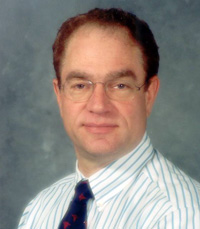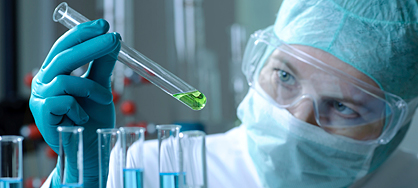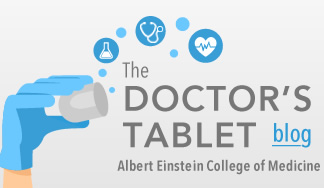FULL STORY
First Rigorous Test Of Magnetic Stimulation Device Shows Promise For Short-Circuiting Migraines
New Data Suggest 7 Million Americans Could Benefit from Treatment
June 27, 2008 - (BRONX, NY) - Migraine sufferers can take treatment into their own hands by zapping the painful headaches with a hand-held magnetic stimulation device, instead of gulping medication, suggests new data presented at the 50th Annual Scientific Meeting of the American Headache Society. Researchers, led by Richard B. Lipton, M.D., professor and vice chair of neurology at Albert Einstein College of Medicine of Yeshiva University, reported encouraging study results from the first rigorous test of the portable device at the annual meeting, being held in Boston this week.
 About the size and weight of a hairdryer, the portable transcranial magnetic stimulation (TMS) device is held to the back of the head at the first sign of a migraine. The sufferer pushes a button, which sends two very brief magnetic field pulses into the brain. Scientists believe the pulses short-circuit the building electrical storm that occurs at the beginning of migraine headaches. This study evaluated TMS as a treatment for migraine with aura.
About the size and weight of a hairdryer, the portable transcranial magnetic stimulation (TMS) device is held to the back of the head at the first sign of a migraine. The sufferer pushes a button, which sends two very brief magnetic field pulses into the brain. Scientists believe the pulses short-circuit the building electrical storm that occurs at the beginning of migraine headaches. This study evaluated TMS as a treatment for migraine with aura.
Migraine with aura usually begins with changes in vision including seeing spots, zig-zag lines or heat waves, sometimes with a graying-out of vision. Scientists believe aura results from a wave of abnormal electrical activity that marches over the surface of the brain, usually starting in visual areas. This activity is called "cortical spreading depression."
"We believe that TMS works by disrupting cortical spreading depression to stop both the aura and the headache," said Dr.Lipton, who also is director of the Montefiore Headache Center. "This study shows that TMS is a safe and effective treatment for the seven million Americans who have migraine with aura."
 In an 18-site multicenter, randomized, double blind, controlled study, 201 patients who suffer from migraine headaches were asked to use the device at the onset of their aura; 102 received a genuine TMS device, and 99 were given an identical-appearing "sham" device, that buzzed and vibrated but did not deliver a magnetic pulse. Patients recorded migraine pain intensity and symptoms in a diary at the time of treatment, as well as 30 minutes, one hour, two hours, 24 hours and 48 hours after treatment. Results were analyzed in 164 patients: 32 of 82 (39 percent) of those who used TMS were pain-free two hours after treatment, compared to 18 of 82 (22 percent) who used the sham device.
In an 18-site multicenter, randomized, double blind, controlled study, 201 patients who suffer from migraine headaches were asked to use the device at the onset of their aura; 102 received a genuine TMS device, and 99 were given an identical-appearing "sham" device, that buzzed and vibrated but did not deliver a magnetic pulse. Patients recorded migraine pain intensity and symptoms in a diary at the time of treatment, as well as 30 minutes, one hour, two hours, 24 hours and 48 hours after treatment. Results were analyzed in 164 patients: 32 of 82 (39 percent) of those who used TMS were pain-free two hours after treatment, compared to 18 of 82 (22 percent) who used the sham device.
A prior study suggested that TMS worked when health care professionals administered treatment in the office using a table-top device. The current study is the first rigorous test of the portable device, which allows headache sufferers to treat themselves at home.
"I believe that TMS will become an important treatment option, particularly for migraine with aura sufferers who want to avoid medications," said Dr. Lipton.
A different type of TMS involving repetitive pulses (rather than two brief pulses) has been studied for the treatment of depression, schizophrenia and movement disorders. TMS is considered safe and well tolerated.
In addition to Dr. Lipton, other authors of the paper being presented at the meeting are: David W. Dodick, M.D., Peter J. Goadsby, M.D., Ph.D., Joel R. Saper, M.D., Stephen D. Silberstein, M.D., Sheena K. Aurora, M.D., Yousef M. Mohammad, M.D., Patricia L. Ruppel, Ph.D., and Robert E. Fischell, Sc.D.
# # #
Other Top Stories
9/11 World Trade Center Exposure Linked to Heart Disease Among NYC Firefighters
On Becoming a Physician: New Einstein Students Receive White Coats and Stethoscopes
Novel Therapy for Acute Migraine Shows Promise in Phase 3 Clinical Trial
First Complete Wiring Diagram of an Animal's Nervous System
Multimillion Dollar NIH Grant to Help Reduce Opioid Use & Get Care to People Who Need It
NIH Grant Funds $23 Million Study of Diseases Affecting People Living with HIV
New TAILORx Data Guides Adjuvant Therapy in Younger Breast Cancer Patients
Einstein Celebrates Its 61st Commencement
Bolstering Biopsies: Testing Patients' Individual Cells to Guide Treatment



Tablet Blog